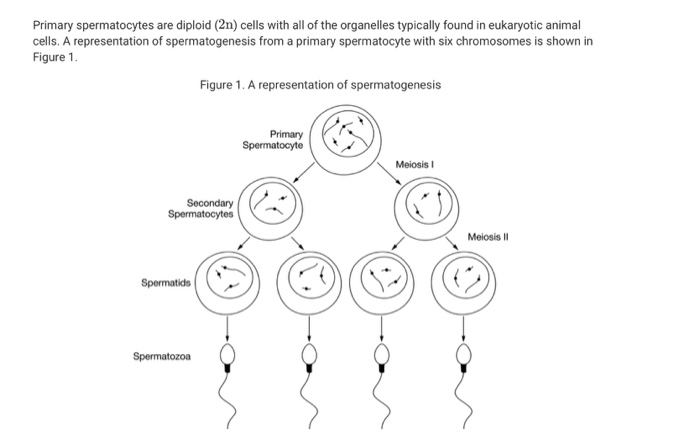Question
1. Describe the process in meiosis that ensures that both maternal and paternal chromosomes are passed on to each Spermatozoon 2. Explain why the genetic
1. Describe the process in meiosis that ensures that both maternal and paternal chromosomes are passed on to each Spermatozoon
2. Explain why the genetic content of individual chromosomes in a spermatozoon most likely differs from the genetic content of individual chromosomes in a primary spermatocyte
3. In some instances, meiosis of a primary spermatocyte with six chromosomes results in two spermatozoa that contain four chromosomes and two spermatozoa that contain two chromosomes. Predict the most likely cause
4. A student claims that if the animal producing the spermatozoa has a mutation in a mitochondrial gene, the probability that any offspring will inherit the mutation is zero. Provide evidence to support this claim

Primary spermatocytes are diploid (2n) cells with all of the organelles typically found in eukaryotic animal cells. A representation of spermatogenesis from a primary spermatocyte with six chromosomes is shown in Figure 1. Secondary Spermatocytes Spermatids Figure 1. A representation of spermatogenesis Spermatozoa Primary Spermatocyte Meiosis I Meiosis II
Step by Step Solution
3.40 Rating (147 Votes )
There are 3 Steps involved in it
Step: 1
Answer 1 During the Prophase 1 of meiosis there are five sub stages going on They are A Leptotene B Zygotene C Pachytene D Diplotene E Diakinesis Pachytene is the phase which ensures passage of both m...
Get Instant Access to Expert-Tailored Solutions
See step-by-step solutions with expert insights and AI powered tools for academic success
Step: 2

Step: 3

Ace Your Homework with AI
Get the answers you need in no time with our AI-driven, step-by-step assistance
Get Started


